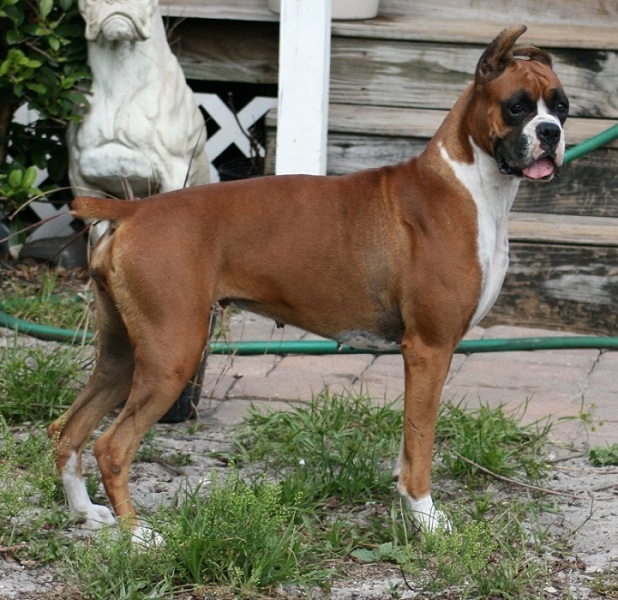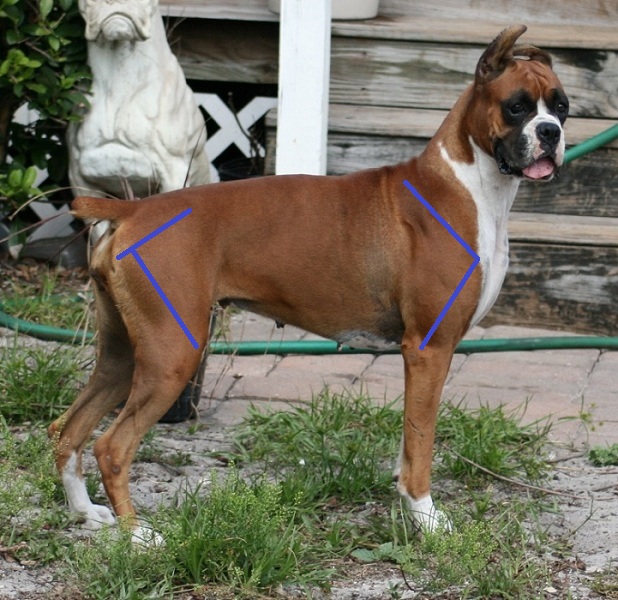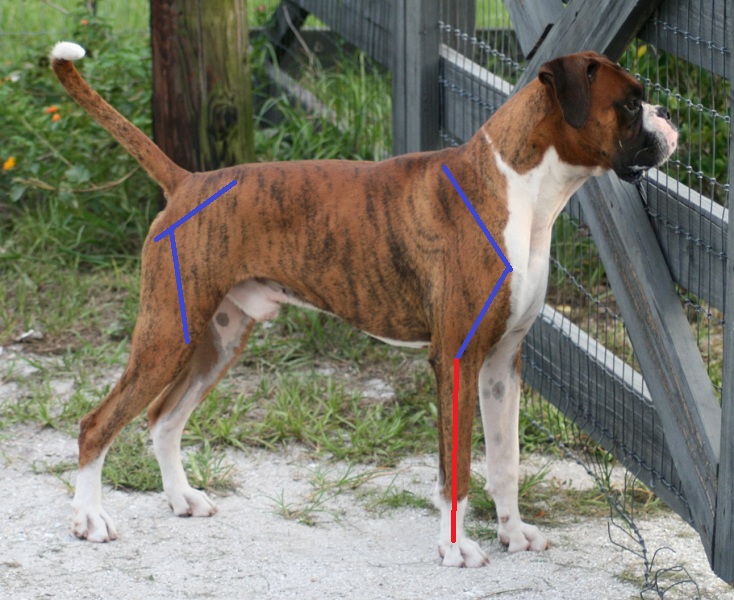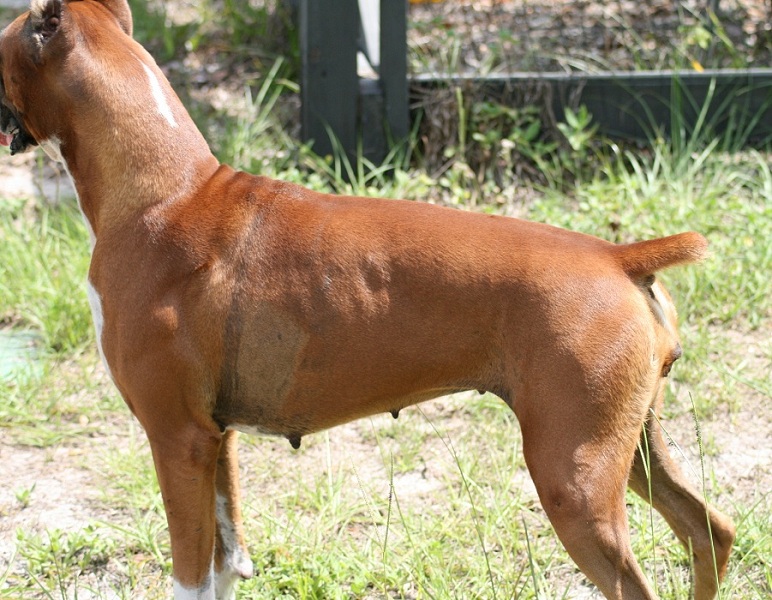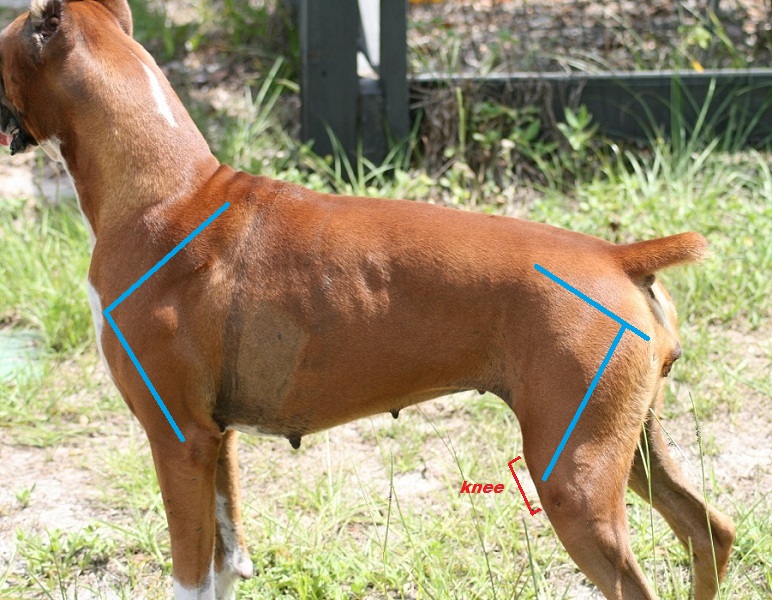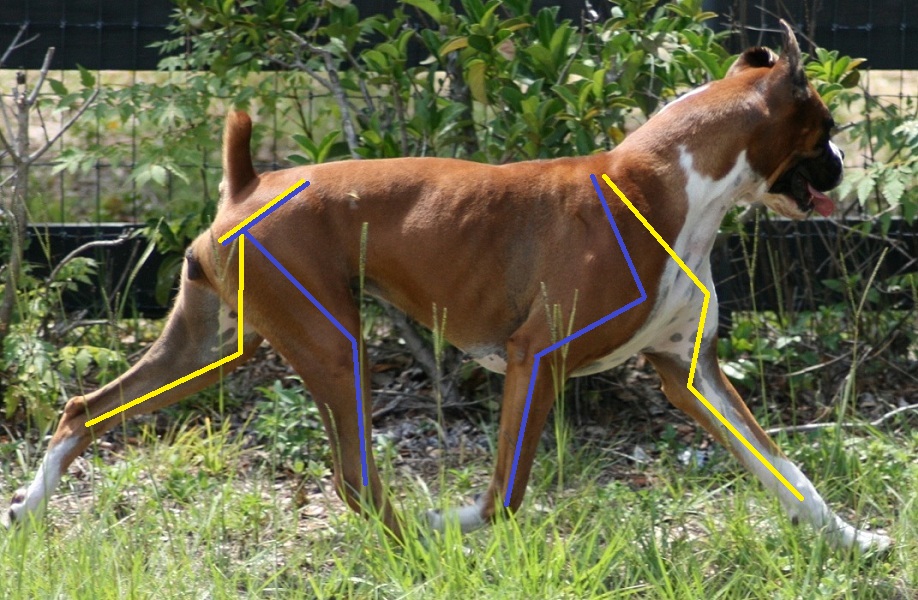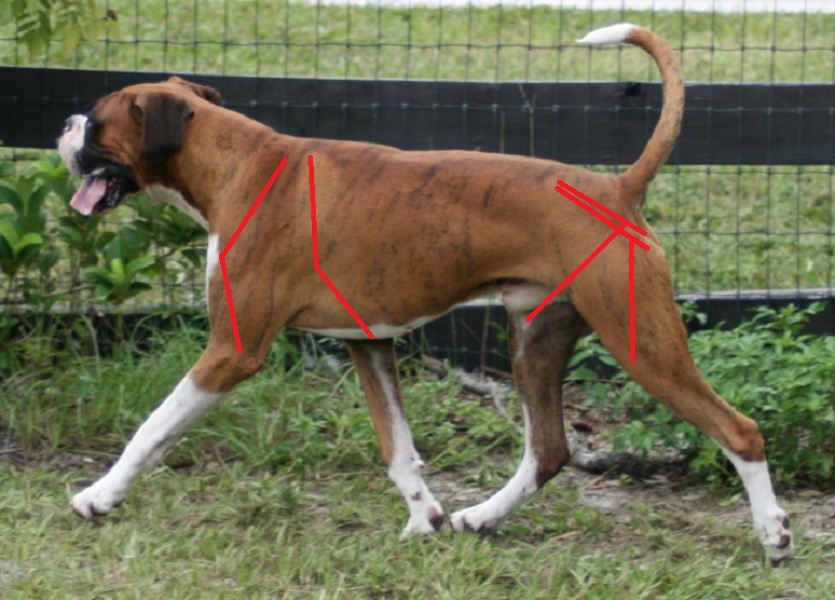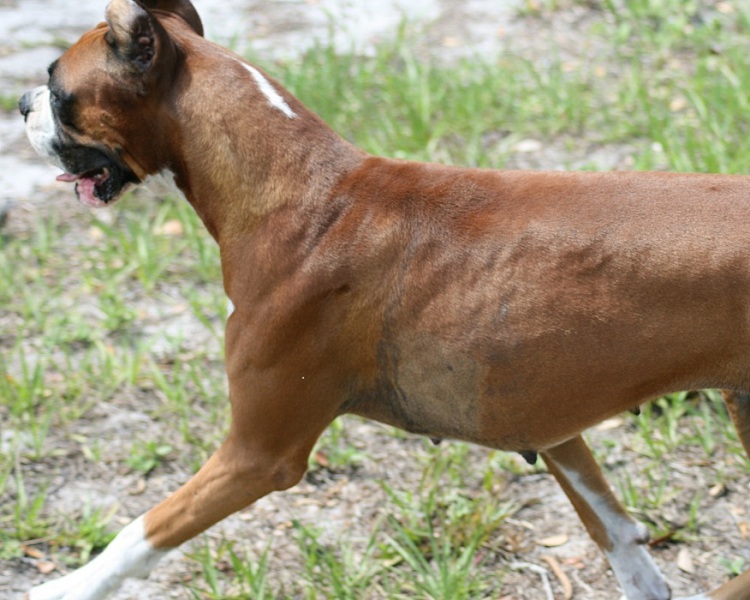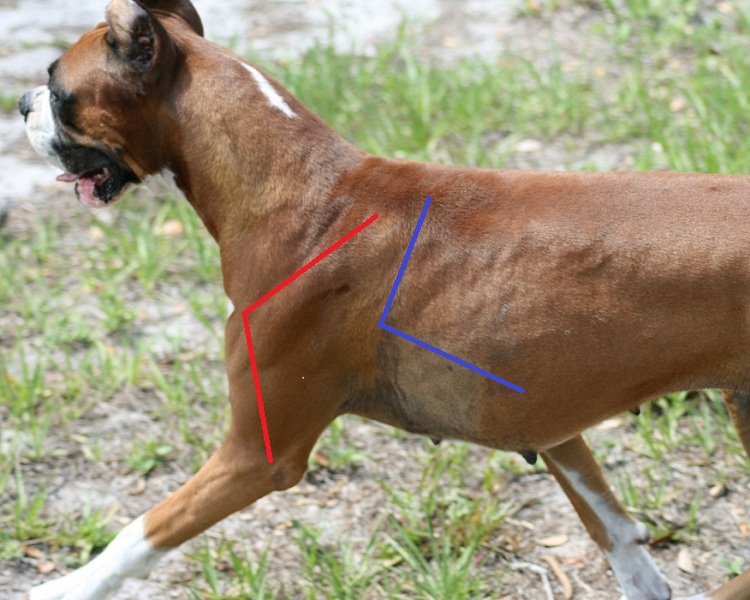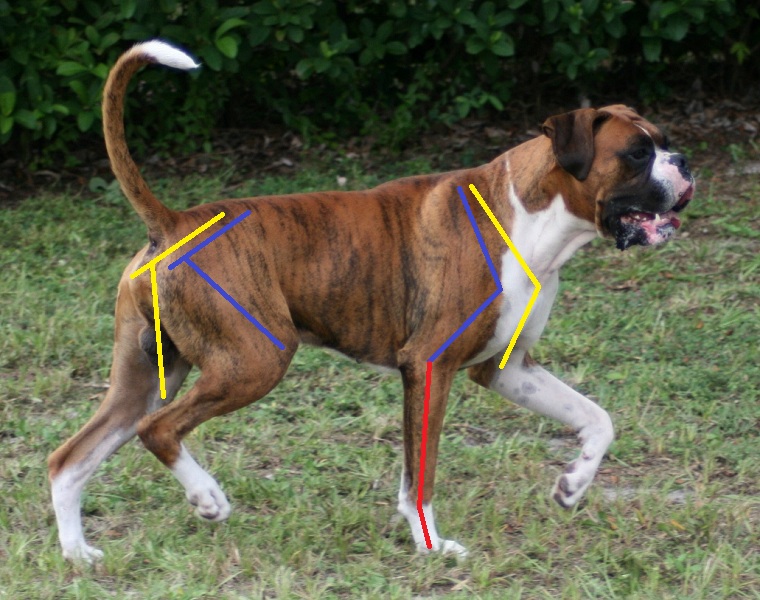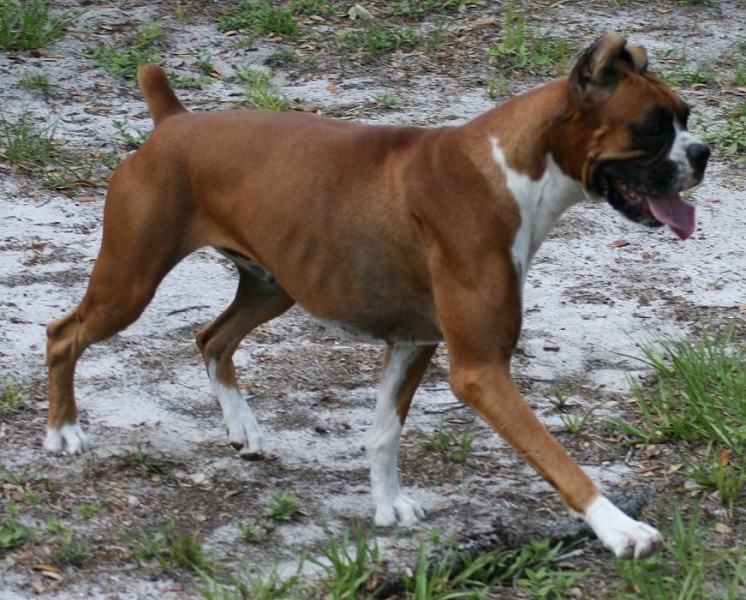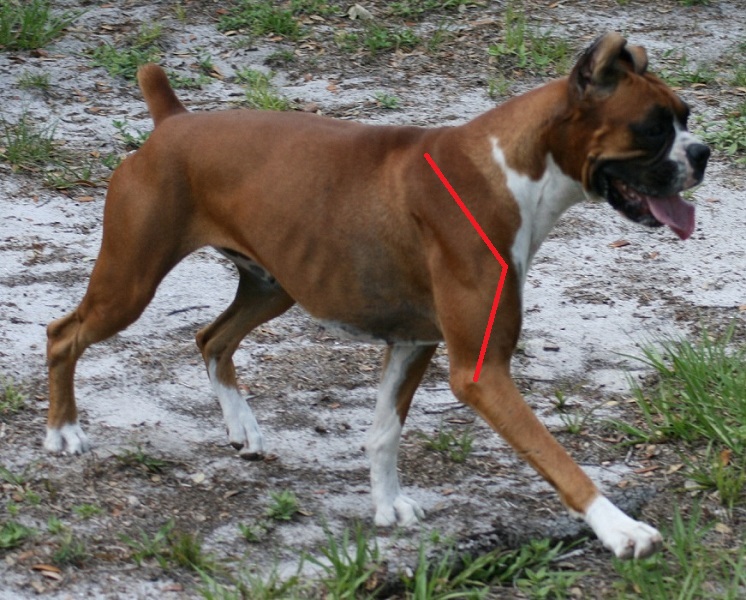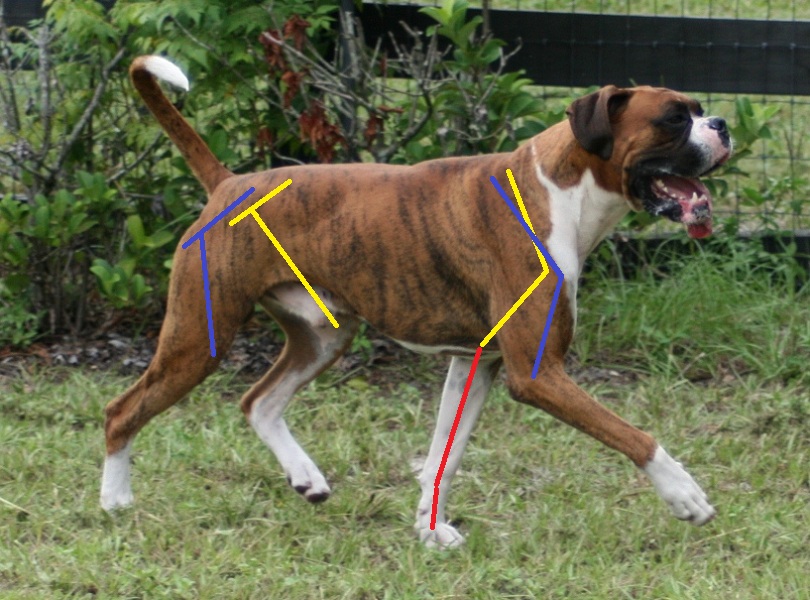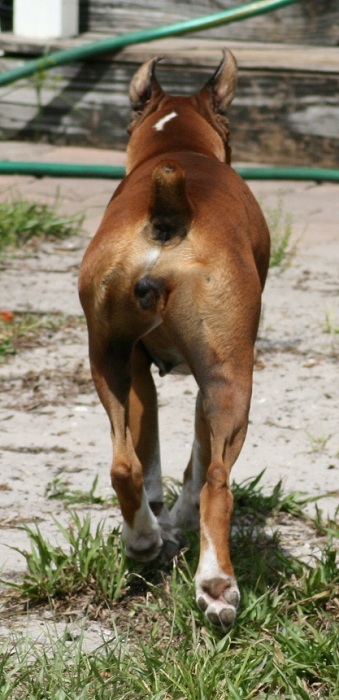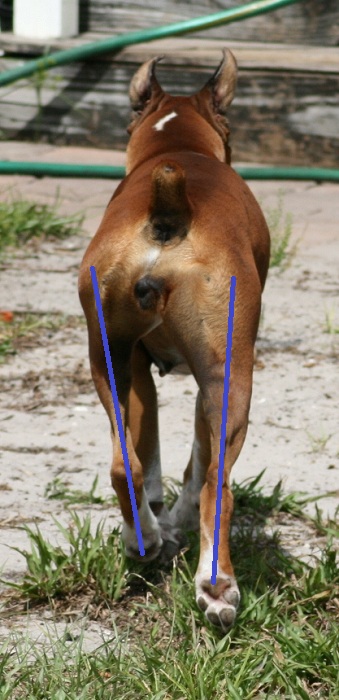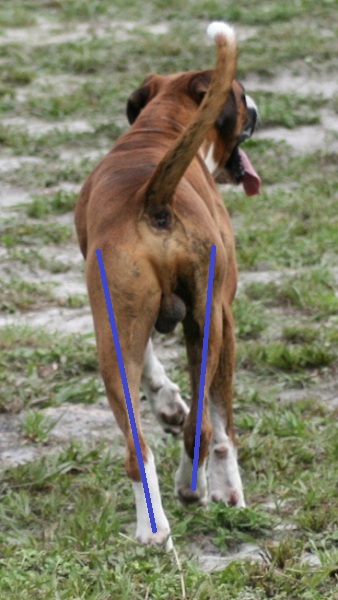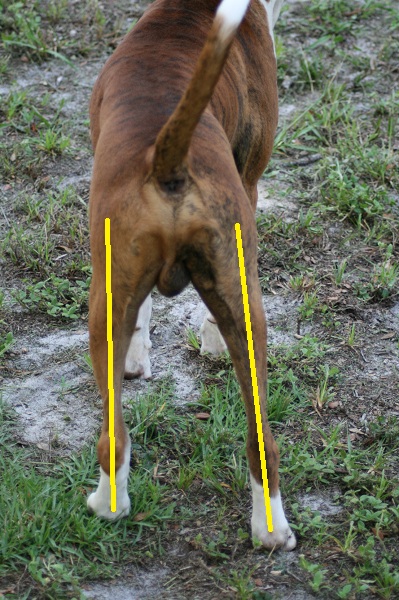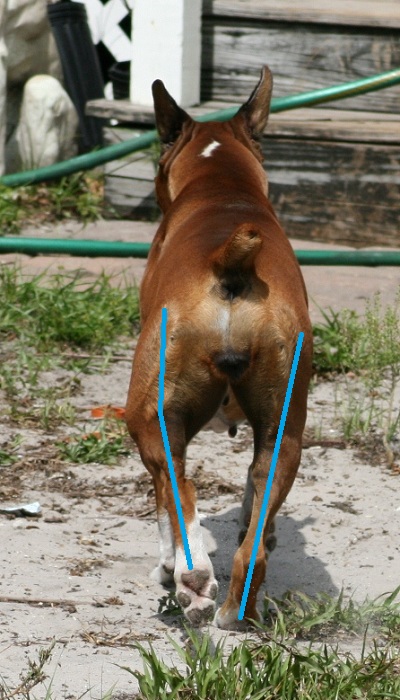|
Boxer Movement |
||||||||||
|
I am using pictures of my own dogs,
mainly "Pilar", as I believe she has very good movement, and "Moose"
who could use improvement. Please keep in mind that all of these
dogs have their imperfections, but for the purpose of this page, are suitable.
I
wish I could include pictures of what I see at every show, but I'm afraid
I'd offend a lot of people!
I will attempt to describe how conformation affects their movement, using illustrated photos to show the hidden "lines" of the underlying bone structure. I have drawn the lines as close to the actual position of the bones, but some people use a line from the point of elbow to point of shoulder, rather than where the upper arm actually attaches to the forearm. On the hip I drew from the hip socket to knee, rather than from the point of hip. This is a rather minor "bone of contention" for some people(pun intended), but is a little more realistic when evaluating the angles. |
||||||||||
|
||||||||||
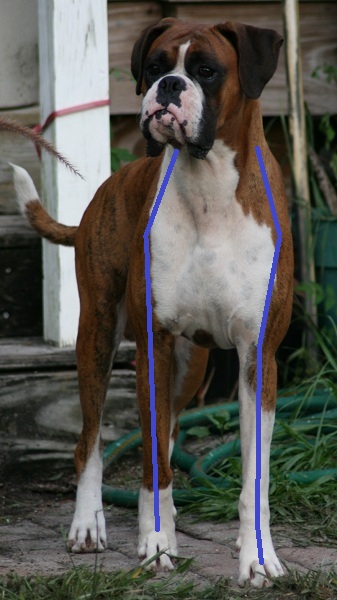
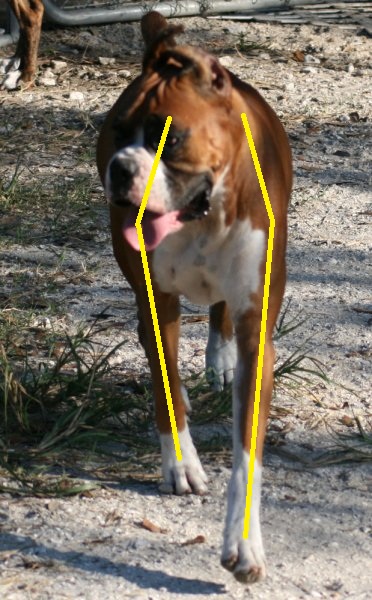
Whether standing or moving, the line from point of shoulder down to the foot should remain straight. Moose's left fore looks twisted, but it is the angle of the camera plus he is not squared up in front. |
||||||||||
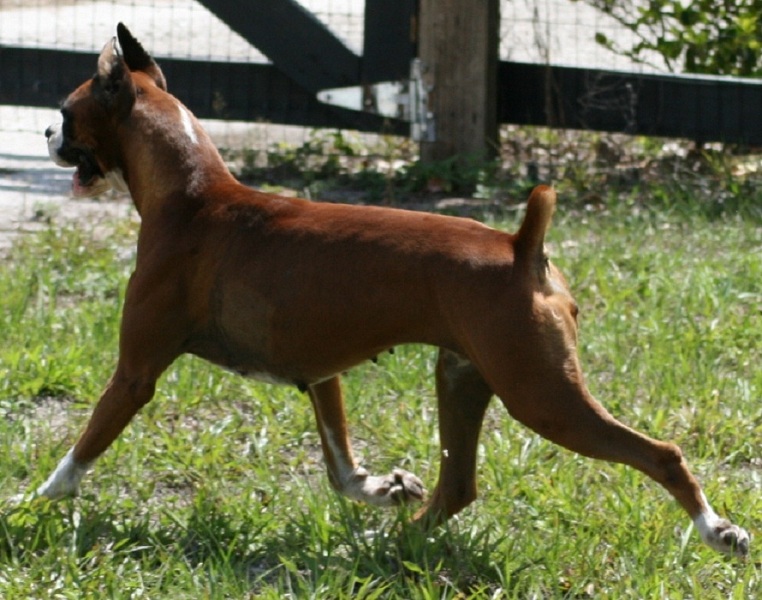
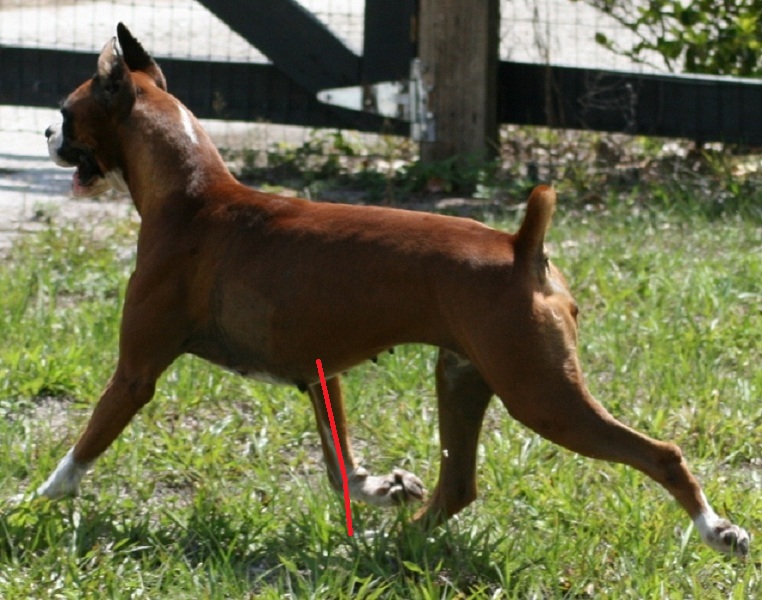
This picture shows the legs just as they touch the ground. The red line is used to illustrate where the paw was, showing that the hind has landed in the spot just vacated by the fore. |
||||||||||
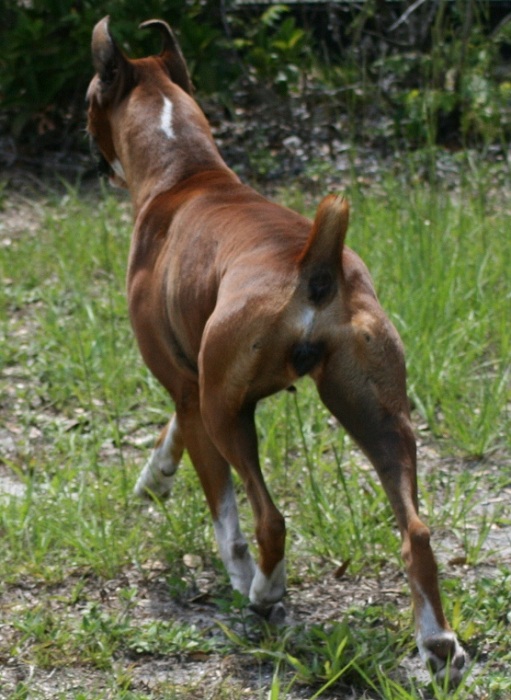
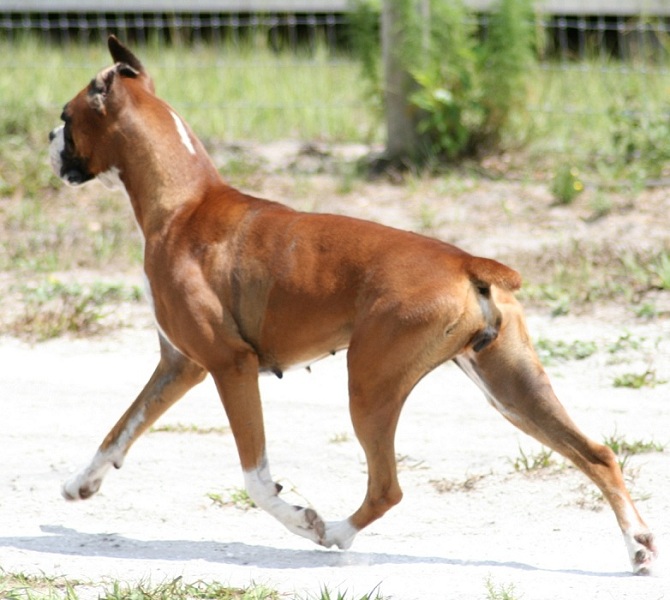
A couple pictures showing her getting some "air time". The one on the left was caught just as her left fore and right hind have left the ground, but the opposing are still reaching forward. The picture on the right you can see that her head is higher than normal (just spotted the cat), and this has added additional bounce to the front as well (and a good argument for not "stringing up" your dogs in the ring). |
||||||||||
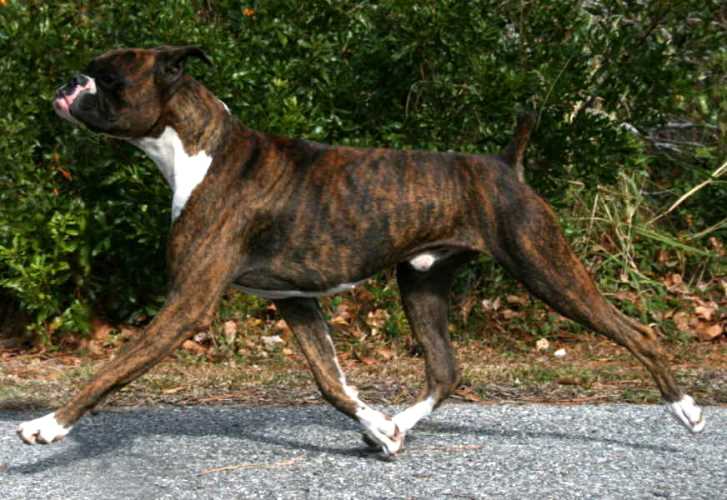
Here is Can. Ch. Sandcastle's
Dream Of The Archer at 16 months old doing a "Flying Trot", although not
to the degree of a German Shepherd, which exhibits a highly exaggerated
form of "moving out". There are mixed opinions whether this gait
is correct for the Boxer, as some overlapping of the feet is inevitable,
but does not affect the efficiency of the gait. The US standard says
that there should be no overlap, however few US Boxers are judged at the
flying trot, whereas this is the most common employed gait in European rings.
Below is a stacked picture of Archer at 5 months, so you can see his
beautiful shoulders.
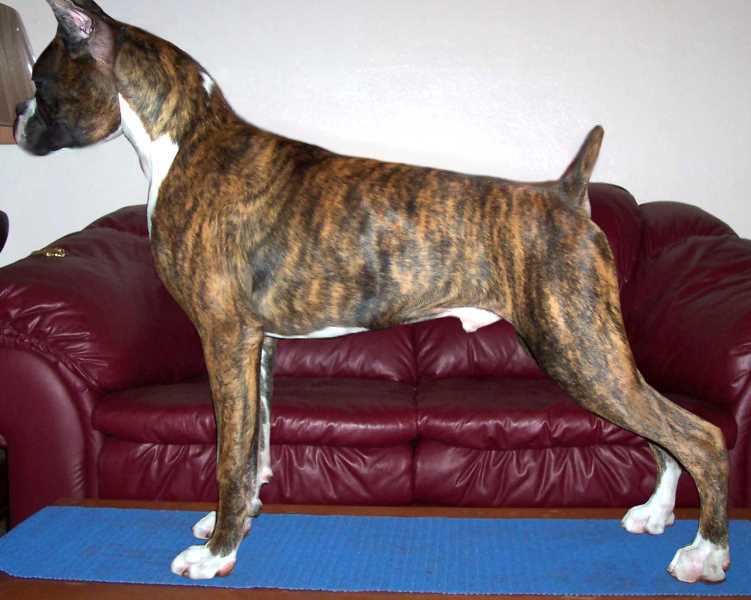
|
||||||||||
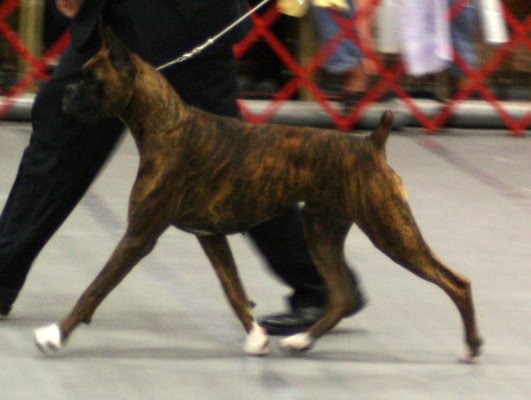
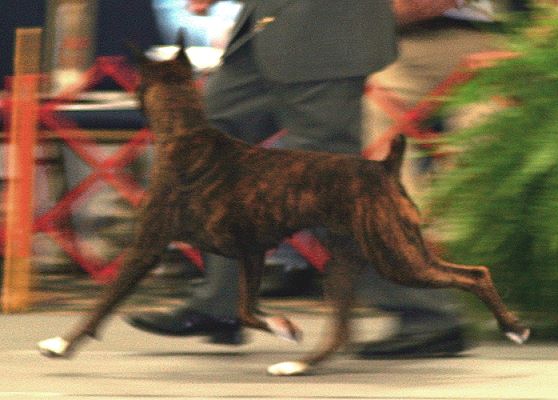
This is my Reese, Ch. Country Time's Sweet Home Alabama. On the left she is being moved on the down-and-back, so is not "moving out". However it is clear that the right hind is prepared to land in the spot the right fore is about to vacate. On the right they are finishing up their trip around the ring and she is preparing to stop (notice her head looking up at her handler?) I'd like to see both feet hit the ground at the same time, but she's starting to change her pace and has shifted her center of balance. |
||||||||||
Here is an 11 month puppy that
is unbalanced. His shoulder and rear angles do not match and
you can see that he does not have adequate drive in the rear. His
head is being carried on the horizontal and throwing his balance off
as well.
Below, his left fore is also approaching a horizontal line, and the right hind is being lifted high off the ground; both of these actions are inefficient movement. He was born with a birth defect that contributes to this problem, but is not the sole reason for it. Okay, I was being a little unfair to him, as he was just starting to break into a run in all these shots and is out of syncopation. In fact this boy only has two speeds right now, run and sleep! So I couldn't catch him at a true trot for the life of me. Regardless, these are adequate to show incorrect movement at the trot. Here is one of him showing better drive, but as I live with him, I can say that he does not move as well in the rear as he does the front: |
||||||||||
|
